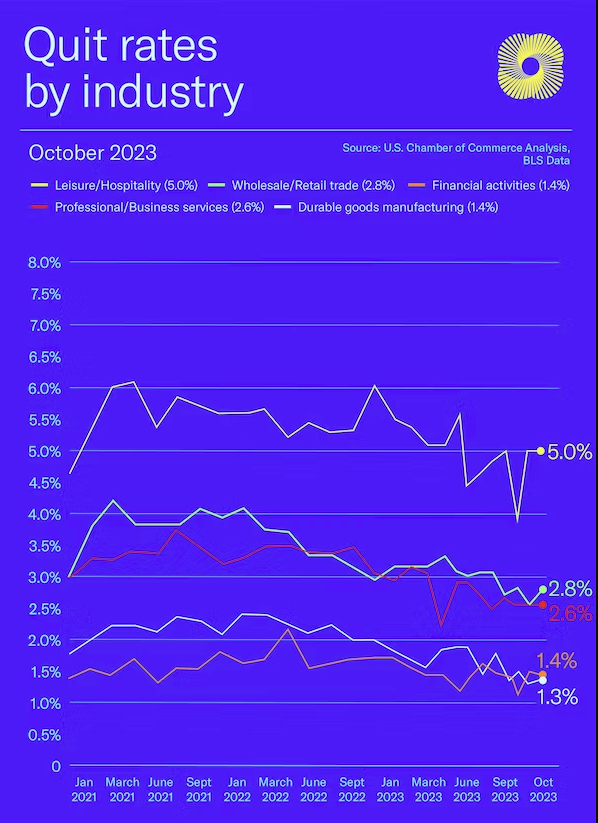
The world is undergoing a substantial demographic transformation, with an increasing prevalence of ageing populations in the majority of developed countries. This demographic shift poses a serious threat to the labour market as we know it, impacting various industries beyond healthcare, including technology, manufacturing, and education sectors.
Despite variations in the systems of selected countries such as Sweden, Switzerland, Germany, the UK, and the US, they all share a common overarching challenge: a shortage of human resources in key sectors. It is imperative to comprehend the root causes of this shortage to formulate targeted and effective solutions tailored to the needs of different age groups.
The Population is Ageing
The global population is ageing rapidly, with the proportion of people aged 60 years and older expected to nearly double by 2050. This demographic shift poses a serious challenge worldwide, as we see:
- A growing percentage of older populations inherently leading to increased demands for services across various sectors, and
- A high average age of the current workforce.
The simultaneous occurrence of these two factors compounds the challenges in an unparalleled manner.
The Shortage of Skilled Professionals
The shortage of qualified professionals is a multifaceted issue:
Increased Demand
As the growing percentage of older populations inherently leads to increased demand for services, ageing populations also face more complex needs, requiring a higher level of expertise across various industries.
Retirement Wave
A high average age of the current workforce and the retirement of older workers significantly contribute to additional shortages. In addition, physically demanding industries are experiencing above-average early retirements due to ill health.
Insufficient Training and Education
The lengthy and demanding education required for many professions contributes to the slow replenishment of the workforce. Inadequate investment in training programs further exacerbates the shortage.
Insufficient Investments in Health and Well-being Initiatives
The workforce is witnessing a retention crisis as qualified individuals exit industries, underscoring the critical need for comprehensive health and well-being programs. Neglecting the physical and mental well-being of professionals contributes to a reduction in the overall longevity of the workforce and consequently additional shortages.
A Closer Look at Selected Countries
Sweden, Switzerland, Germany, the UK, and the US are all facing a growing shortage of skilled professionals across various sectors, including technology, manufacturing, and education. The challenges are exacerbated by demographic shifts, increased demand for services, and inadequate training and retention strategies.
Sweden
Sweden is facing a growing skilled worker shortage, exacerbated by an ageing population and other demographic shifts. Despite having one of the highest employment rates in the OECD, reaching 72.80% in July 2023, Sweden’s employment growth is predicted to stall, with the unemployment rate expected to increase from 7.6% in 2023 to 8.6% in 2025. This reflects a broader trend in the labour market, where the availability of skilled labour is not keeping pace with demand.
In terms of specific sectors, Sweden’s largest employers are in healthcare and social services, business services, and trade. However, there is a considerable shortage of highly skilled workers across various professions, including civil engineers, IT professionals, medical professionals, police officers, and educators. The shortage is not limited to high-skilled jobs; there are also significant gaps in healthcare assistance, construction, manufacturing, and other skilled trades.
A survey by Manpower Group in 2022 highlighted the extent of this talent shortage, attributing it to shifting demographics such as declining birth rates and an increase in early retirees. In 2022, 41% of private employers and 60% of public employers in Sweden reported experiencing a skills shortage when hiring. The talent shortage across industries in Sweden is particularly pronounced in manufacturing (81%), IT and technology (80%), and wholesale and retail trade (79%). This gap between the skills required by businesses and those available in the market is now at its greatest, indicating a challenging environment for employers to find the right blend of skills to meet their present and future needs [1].
Switzerland
Switzerland is grappling with a shortage of skilled professionals, especially in elderly care. According to Adecco, the shortage of skilled workers reached a peak in Switzerland in 2022, yet there are few signs of the issue abating in 2023. Despite declining growth momentum due to the current economic slowdown, the skills shortage has increased by 24%, reaching record highs. Recruiting staff remains a challenge for companies. Vacancies for health specialists, IT experts and technical engineers are currently proving particularly difficult to fill. This is highlighted by the Swiss Skills Shortage Index published by the Adecco Group Switzerland and the Swiss Job Market Monitor project undertaken by the University of Zurich. [2].
Germany
A substantial portion of the German population is ageing, with almost a quarter aged over 65. This demographic shift contributes significantly to the labor shortage, as the ageing population leads to a higher retirement rate, reducing the availability of experienced and skilled workers [3].
Low birth rates contribute to a reduced pool of young, native talent entering the workforce. Additionally, internal migration patterns within Germany affect the distribution of the workforce, leading to regional imbalances in the availability of skilled labour. The demand for new skills, driven by rapid technological changes, has created a gap in the labour market. The current workforce is struggling to meet these evolving requirements, leading to a mismatch between available skills and industry needs.
United Kingdom
The UK is experiencing a critical shortage of skilled workers, a situation that has been exacerbated by Brexit. The end of free movement has contributed significantly to labor shortages, particularly in less-skilled sectors of the economy. The new immigration system has not been liberal enough to compensate for these shortages. This shortfall has been especially pronounced in sectors such as transport and storage, wholesale and retail, and accommodation and food. The manufacturing and construction sectors have also suffered significant labor shortages since Brexit [4].
United States

In the United States, the shortage of skilled workers, which has been a longstanding issue, was further intensified by the COVID-19 pandemic. This period saw a major disruption in America’s labor force, leading to what has been referred to as ‘The Great Resignation.’ In 2022 alone, over 50 million workers quit their jobs, a trend that continued into 2023 but at a slightly reduced rate. This phenomenon has been more accurately described as ‘The Great Reshuffle,’ where workers transition to other jobs seeking better work-life balance, flexibility, increased compensation, or a strong company culture.
The manufacturing industry still has around 616,000 job openings unfilled.
The impact of this reshuffle has been uneven across different industries. Jobs that are fully in-person and traditionally have lower wages, such as those in the leisure and hospitality industry, have experienced the highest quit rates. Conversely, more stable and higher-paying industries like financial activities and manufacturing have seen lower quit rates. However, the manufacturing industry, despite making strides towards recovery, still had around 616,000 job openings unfilled as of August 2023.
Across the board, hiring rates have continually outpaced quit rates, indicating a dynamic labor market. In sectors like education and health services, and professional and business services, there has been a consistent high number of job openings, spanning a broad spectrum of occupations. Overall, as of September 2023, almost all industries were experiencing worker shortages, highlighting the pervasive impact of the pandemic on the US labor market [5].
Solutions and Future Outlook
To effectively address the skilled workforce shortage, a multi-faceted approach encompassing investment in education, retention strategies, and technology investments is essential. Here’s a breakdown:
Investment in Education
Substantial investments in expanding education programs across industries are essential to produce a more significant number of qualified professionals. Enhancing education and training programs to meet current and future skill demands. This includes expanding vocational training, apprenticeships, and higher education courses aligned with industry needs.
Retention Investments
To bolster workforce retention, offering competitive salaries, attractive benefits, and professional development opportunities is crucial. Implementing strategies to retain existing workforce, such as competitive compensation, career development opportunities, flexible work arrangements, and a positive work culture. Strategic investments should be directed towards the older workforce to preserve skills, knowledge, and experience.
Technology Investments
Utilising technology can alleviate the burden on workers and enhance efficiency across industries. Technology also has the capacity to promote health, activity, and connectivity, contributing to a healthier and more active ageing population, ultimately reducing the demand for extensive services.
This could involve automating routine tasks, investing in digital training tools, and adopting new technologies that require specialized skills, thereby creating new job opportunities.
The Junoverse Opinion
The skilled workforce shortage is a global challenge requiring strategic planning, investment, and cooperation to ensure a sustainable and high-quality workforce for the future. We are witnessing a global trend where ageing populations and changing labour market dynamics are leading to skill shortages in various sectors. To tackle these challenges, a key strategy for organisations needs to be to retain their current employees for longer.
The senior workforce is a prime target for such strategies, as they belong to some of the most experience and best trained individuals in most organisations. Workforce Analytics can help identify areas of improvement on an organisational level. Whilst improving internal policies and strategies, it is important to support such initiatives with a digital platform. Junoverse READY™ brings together individual employee improvements with organisational growth through data led excellence.
References:
[1] Inhunt World. (2023) Sweden’s Job Market and Hiring in 2023.
[2] Adecco. (2023). Swiss Skills Shortage Index 2023: Ongoing shortage of skilled workers.
[3] Statista. (2022). Skilled workers shortage in Germany.
[4] Freeths. (2023). Labour shortages in the UK and the post-Brexit immigration system.